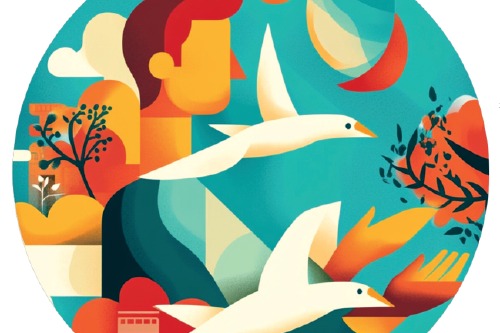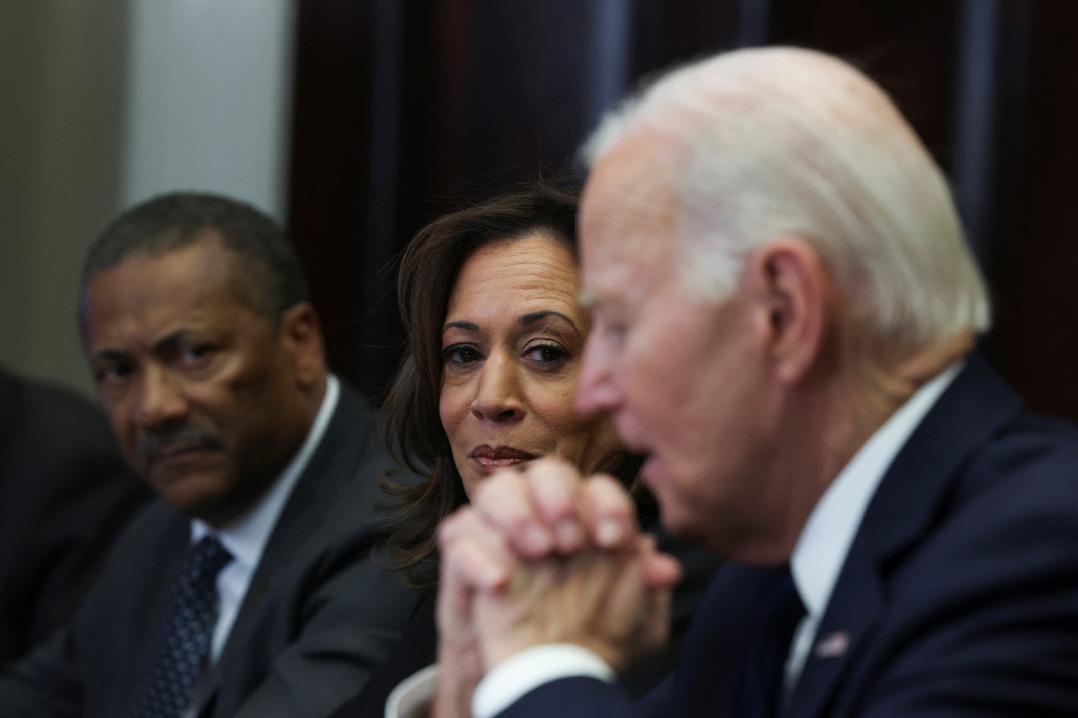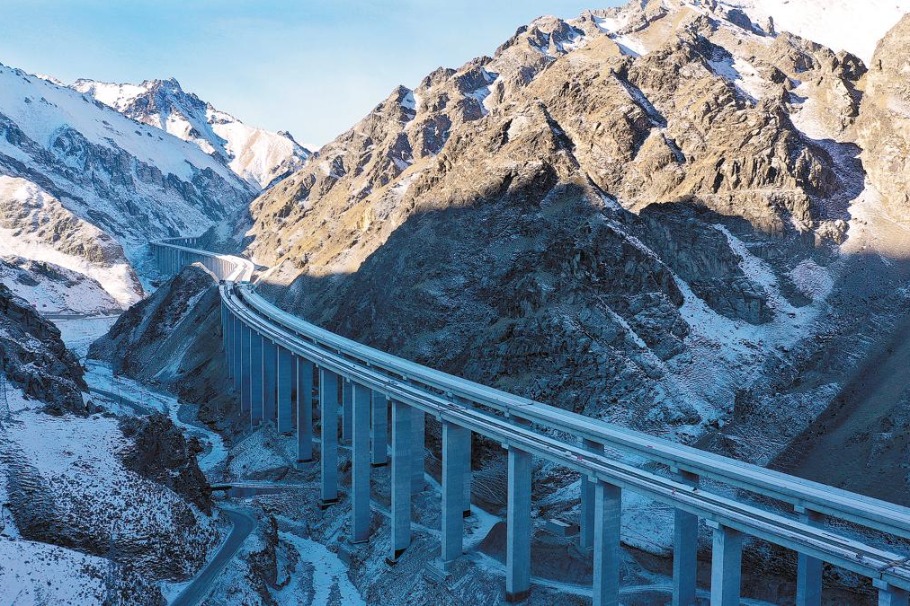The legacy of former Native boarding schools in North America and Australia
Xinhua | Updated: 2024-08-09 15:22
BEIJING -- For Ramona Klein, a 77-year-old Native Indian woman in America, hunger, physical punishment and forced labor are all she can remember about a former North Dakota Native boarding school at which she stayed beginning at the age of seven.
During her stay, Klein was frequently punished by kneeling on the broom handles and was beaten all over her body with a short paddle by the warden.
"It's a lifelong scar, it's a lifelong wound," she said.
Klein's experience epitomizes the tragic history of Aboriginal Americans. The US Interior Department recently released an investigative report showing that at least 973 Native American children died between 1819 and 1969 while attending US government-run or supported boarding schools.
Many of those children were abused in boarding schools, forced to convert their beliefs and punished for speaking their Native languages, leaving lasting damage to Aboriginal communities.
"A WAR ON ABORIGINAL CHILDREN"
Since the enactment of the Civilization Fund Act in 1819, the United States has established Native boarding schools on a large scale across the country, forcing Native children to enroll and destroy their cultural roots.
The conditions in these schools were deplorable, and many children were subjected to physical punishment and sexual abuse at school, some dying as a result.
The US Interior Department's report showed that at least 74 cemeteries had been discovered at 65 former boarding school sites across the United States for the burial of children who died while at school.
Native American boarding schools are a gruesome chapter in American history, said American scholar Barbara Landis, "I don't think there's any way to whitewash that."
Similar scenarios played out in Canada as well. Native children were taken, most of the time by coerce, to Native residential schools characterized by poor hygiene, physical abuse and hard labor.
According to a report released by Canada's Truth and Reconciliation Commission, between the 1840s and the 1990s, the Canadian government established 139 residential schools to which at least 150,000 Aboriginal children were forcibly sent, and more than 4,000 were abused and killed at school. There are more than 1,700 unmarked graves near the former sites of Aboriginal residential schools in many parts of Canada.
"Those schools were a war on Aboriginal children," said survivor Doris Young.
In Australia, to assimilate Aboriginal people, the Australian government instituted a series of policies in the early 20th century that allowed authorities in some federal states to take Aboriginal children from their parents at any time and for any reason and send them to Native boarding schools. In these places, Native children were forced to perform heavy physical labor and endure inhuman abuse.
A report released by the Australian government in 1997 estimated that between 1900 and 1980, about one-third of Native children were sent to boarding schools in Australia, dubbed the "Stolen Generation."
"DON'T TRY TO TELL ME THIS WASN'T GENOCIDE"
From the moment European colonizers set foot on the American continent, they viewed Native peoples as an obstacle to their plundering and a threat to the colonies. To drive out these "savages," the colonists waged wars against the Native Indians, killing and displacing them. However, war proved costly for the colonists, so the first president of the United States, George Washington, and others suggested that bloodshed could be minimized by forcing the Native Americans to assimilate into white culture.
In 1881, Carl Schurz, then US Secretary of the Interior, said that the cost of "educating" a Native Indian child was far less than killing a Native Indian in a war. Investing in establishing more boarding schools was not only "a philanthropic act, but also the truest and wisest economy."
In the late 1800s, the US government opened the first boarding school for Native Indian children, the Carlisle Indian Industrial School, whose founder, Richard Henry Pratt, was the original author of the infamous slogan, "Kill the Indian in him, and save the man." Over the next half-century, nearly 8,000 Aboriginal children attended the school.
The Canadian government, "inspired" by the United States, followed suit in establishing residential schools throughout the country and prohibited Native children from entering other schools.
The boarding schools in the United States and Canada committed cultural genocide against the "uncivilized" Aboriginal people under the guise of eradicating their "savage" Indigenous cultures and "rescuing them."
"Don't try to tell me this wasn't genocide!" survivor Ben Sherman said, "They went after our language, our culture, our family ties, our land. They succeeded on almost every level."
Data from the Statistics Canada 2021 Census shows that most of Canada's over 70 Aboriginal languages are on the verge of disappearing, with only 13.1 percent of Aboriginal people being able to speak their Native languages fluently.
STOLEN LAND
Many have noticed the sins of Aboriginal boarding schools but rarely discussed the motive behind the policy of cultural genocide.
The report of the Canadian Truth and Reconciliation Commission offered a clear answer -- the government "wished to divest itself of its legal and financial obligations to Aboriginal people and gain control over their land and resources."
According to the statistics of American researchers, from 1887 to 1933, the US government plundered about 360,000 square kilometers of land from the Native Indians through unequal agreements, excessive expropriation or massacre.
The period of the greatest expansion of the boarding school system coincided with the colossal theft of Indigenous land, said Brenda Child, a professor at the University of Minnesota in the United States.
The land taken from the Native Indians, along with its underground resources, was allocated by the government to public institutions such as colleges and universities.
Professor Child's University of Minnesota was one of the institutions built on the "stolen" land. According to a report released by the US news portal Grist in February, since its establishment in 1851, the University of Minnesota has taken more than 750 square kilometers of land from Aboriginal tribes through relevant legislation.
The university reaps huge benefits by renting or selling land, grazing, mining and other activities. Between 2018 and 2022, those lands produced more than 17 million US dollars in revenue, primarily through leases for mining iron and taconite, the report said.
Australia, which is vast and sparsely populated, has long been recognized by colonists as "terra nullius" -- meaning land belonging to no one. They deprived the Aborigines of their ownership of land through legislation and occupied their land by expulsion and confiscation.
In the process of land looting by colonists, many Native Australians were killed, while those who survived lost their food sources as they were deprived of land for agricultural production.
According to a study by Australian researchers, the First Nations population went from an estimated 1 to 1.5 million before the invasion in 1788 to less than 100,000 by the early 1900s.
LINGERING TRAUMA
The traumatic experience at boarding schools not only caused lifelong trauma but also had a lasting impact on the next generation of Indigenous communities.
"Our people are still suffering, our youths are suffering, our children are still being born into very dysfunctional families that were created because of the IRS (Indian Residential School) system, so now we have a whole host of problems," said Dawn McIntyre, a descendant of a survivor of the former Beauval Indian Residential School in Saskatchewan in central Canada.
Residential schools have destroyed Indigenous cultures and family structures, and the experiences of abuse have left Indigenous people suffering from depression, violence and drug addiction.
Canadian studies indicated that the lack of formal education in residential schools has resulted in lower literacy skills among the Indigenous people, which leads to lower income levels and higher rates of crime and suicide. Another Canadian study found that children of residential school survivors are at greater risk of sexual and alcohol abuse.
"It continues to go through generations, and it continues to snowball, and it takes a really great deal of effort for a person to lift themselves out of that," McIntyre said.
Indigenous communities in the United States and Australia also suffered from the lingering effects of the boarding school system.
Former boarding school attendees were more likely to have chronic physical health conditions, including diabetes, and they had nearly four times the risk of any type of cancer as those who were not subjected to boarding schools, according to a study by Ursula Bear, an assistant professor of Population Health at the University of North Dakota.
Notably, Bear also found that someone whose father attended a Native boarding school had more possibilities of having chronic physical health problems than someone whose father did not attend.
Australian government statistics showed that the average life expectancy of Indigenous Australians is over eight years lower than that of non-Indigenous Australians, with higher rates of infant mortality, obesity, unemployment and suicide.
According to Australian researcher Patrick Wolfe, invasion is a structure, not an event. The suffering of the Indigenous communities is not only from the past but still being perpetuated today.
"Compulsory residential boarding school education has had profound consequences for several generations of American Indians," said Bear.
























